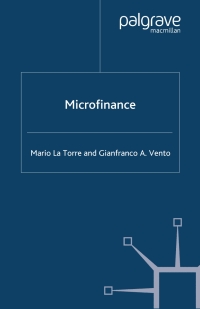


You are evaluating the HomeNet project under the following assumptions: new tax laws allow 100% bonus depreciation (all the depreciation expense, $120 million, occurs when the asset is put into use, in this case immediately). Sales of 50,000 units in year 1 increasing by 53,000 units per year over the life of the project, a year 1 sales price of $260/unit, decreasing by 10% annually and a year 1 cost of $120/unit decreasing by 18% annually. In addition, new tax laws allow 100% bonus depreciation (all the depreciation expense occurs when the asset is put into use, in this case immediately). Research and development expenditures total $15 million in year 0 and selling, general, and administrative expenses are $2.8 million per year (assuming there is no cannibalization). Also assume HomeNet will have no incremental cash or inventory requirements (products will be shipped directly from the contract manufacturer to customers). However, receivables related to HomeNet are expected to account for 15% of annual sales, and payables are expected to be 15% of the annual cost of goods sold. Under these assumptions the unlevered net income, net working capital requirements and free cash flow are shown in the Table 3. Using the FCF projections given: a. Calculate the NPV of the HomeNet project assuming a cost of capital of 10%, 12% and 14%. b. What is the IRR of the project in this case? i Free Cash Flow Table - Year 0 1 2 3 4 5 53 10% 18% 50 260 120 103 234.00 98.40 156 210.60 80.69 209 189.54 66.17 HomeNet Units Sales (000s) Sales Price ($/unit) Cost of Goods Sold ($/unit) Operating Expenses ($000s) Hardware & Software Develop. Marketing & Technical Support Capital Expenditures Lab Equipment Depreciation Corporate Tax Rate (15,000) (2,800) (2,800) (2,800) (2,800) (7,500) 100% 20% 20% 20% 20% 20% Year 0 1 2 3 4 5 Incremental Earnings Forecast ($000) 1 Sales 2 Cost of Goods Sold 3 Gross Profits 4 Selling, General, and Administrative 5 Research and Development 6 Depreciation 7 EBIT 8 Income Tax at 20% 9 Unlevered Net Income 13,000 24,102 32,854 39,614 (6,000) (10,135) (12,588) (13,830) 7,000 13,967 20,266 25,784 (2,800) (2,800) (2,800) (2,800) (15,000) (7,500) (22,500) 4,500 (18,000) 4,200 (840) 3,360 11,167 (2,233) 8,934 17,466 (3,493) 13,973 22,984 (4,597) 18,387 Free Cash Flow ($000) 10 Plus: Depreciation 11 Less: Capital Expenditures 12 Less: Increases in NWC 13 Free Cash Flow 7,500 (7,500) (1,050) 2,310 (1,045) 7,889 (945) 13,028 (827) 17,560 (18,000) 3,867 You are evaluating the HomeNet project under the following assumptions: new tax laws allow 100% bonus depreciation (all the depreciation expense, $120 million, occurs when the asset is put into use, in this case immediately). Sales of 50,000 units in year 1 increasing by 53,000 units per year over the life of the project, a year 1 sales price of $260/unit, decreasing by 10% annually and a year 1 cost of $120/unit decreasing by 18% annually. In addition, new tax laws allow 100% bonus depreciation (all the depreciation expense occurs when the asset is put into use, in this case immediately). Research and development expenditures total $15 million in year 0 and selling, general, and administrative expenses are $2.8 million per year (assuming there is no cannibalization). Also assume HomeNet will have no incremental cash or inventory requirements (products will be shipped directly from the contract manufacturer to customers). However, receivables related to HomeNet are expected to account for 15% of annual sales, and payables are expected to be 15% of the annual cost of goods sold. Under these assumptions the unlevered net income, net working capital requirements and free cash flow are shown in the Table 3. Using the FCF projections given: a. Calculate the NPV of the HomeNet project assuming a cost of capital of 10%, 12% and 14%. b. What is the IRR of the project in this case? i Free Cash Flow Table - Year 0 1 2 3 4 5 53 10% 18% 50 260 120 103 234.00 98.40 156 210.60 80.69 209 189.54 66.17 HomeNet Units Sales (000s) Sales Price ($/unit) Cost of Goods Sold ($/unit) Operating Expenses ($000s) Hardware & Software Develop. Marketing & Technical Support Capital Expenditures Lab Equipment Depreciation Corporate Tax Rate (15,000) (2,800) (2,800) (2,800) (2,800) (7,500) 100% 20% 20% 20% 20% 20% Year 0 1 2 3 4 5 Incremental Earnings Forecast ($000) 1 Sales 2 Cost of Goods Sold 3 Gross Profits 4 Selling, General, and Administrative 5 Research and Development 6 Depreciation 7 EBIT 8 Income Tax at 20% 9 Unlevered Net Income 13,000 24,102 32,854 39,614 (6,000) (10,135) (12,588) (13,830) 7,000 13,967 20,266 25,784 (2,800) (2,800) (2,800) (2,800) (15,000) (7,500) (22,500) 4,500 (18,000) 4,200 (840) 3,360 11,167 (2,233) 8,934 17,466 (3,493) 13,973 22,984 (4,597) 18,387 Free Cash Flow ($000) 10 Plus: Depreciation 11 Less: Capital Expenditures 12 Less: Increases in NWC 13 Free Cash Flow 7,500 (7,500) (1,050) 2,310 (1,045) 7,889 (945) 13,028 (827) 17,560 (18,000) 3,867









